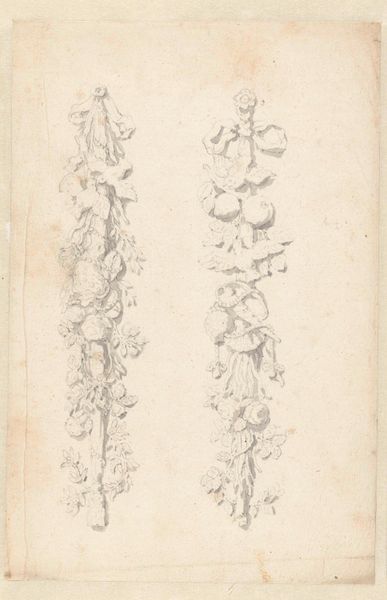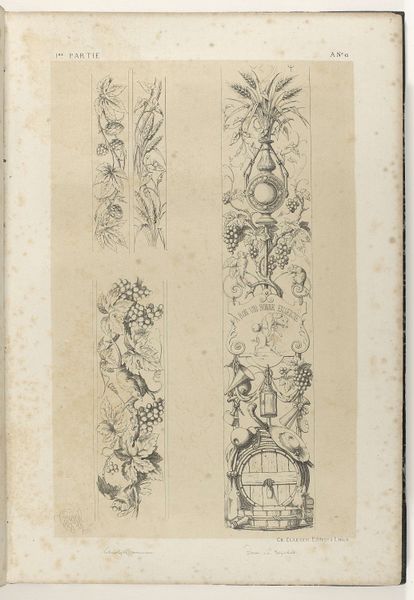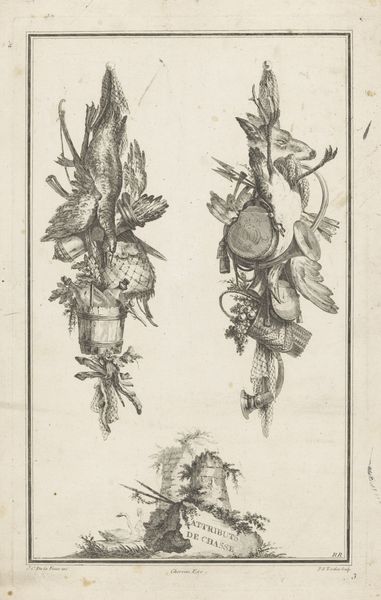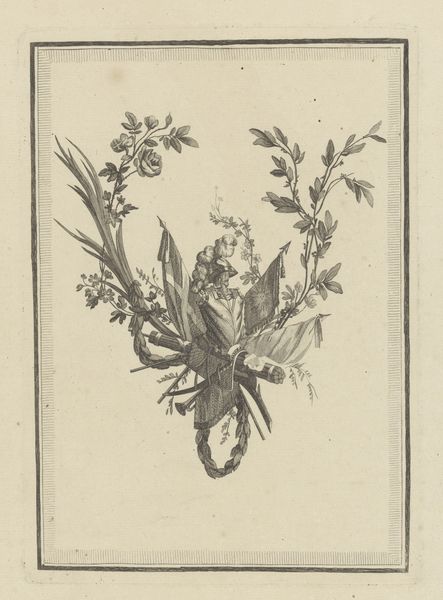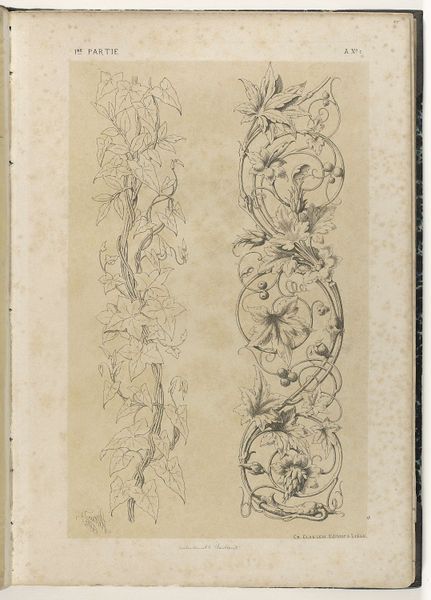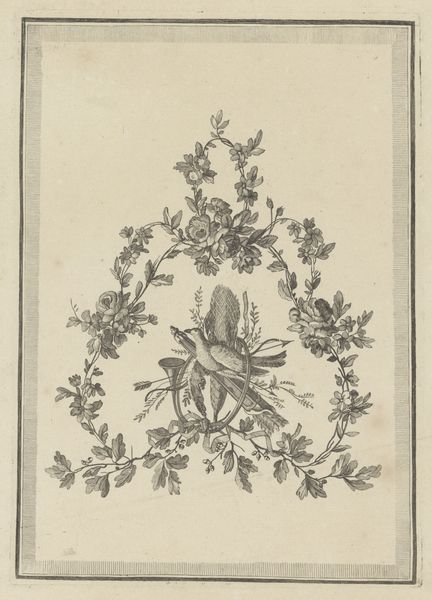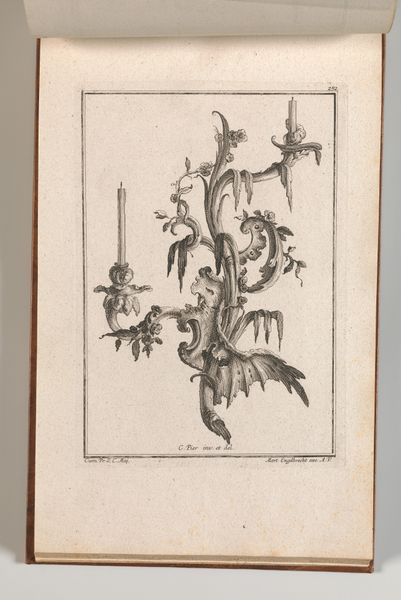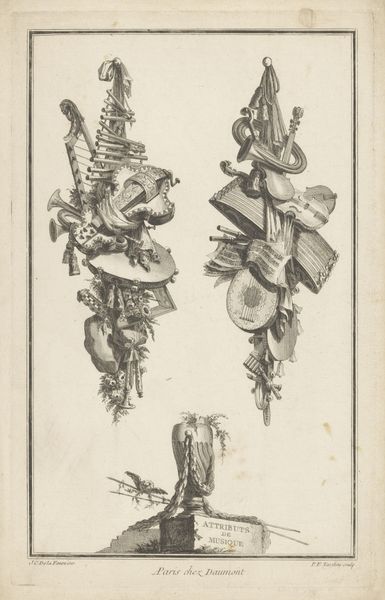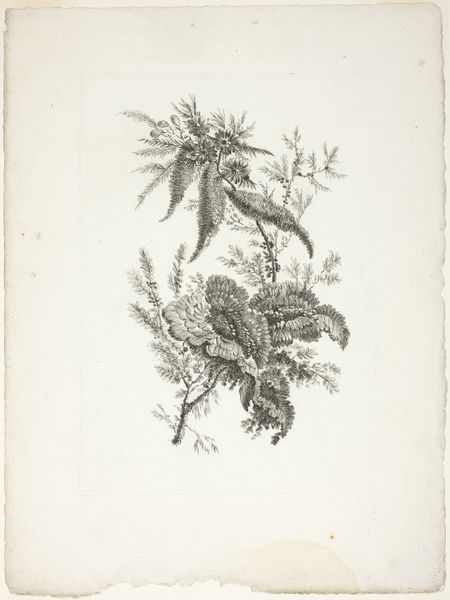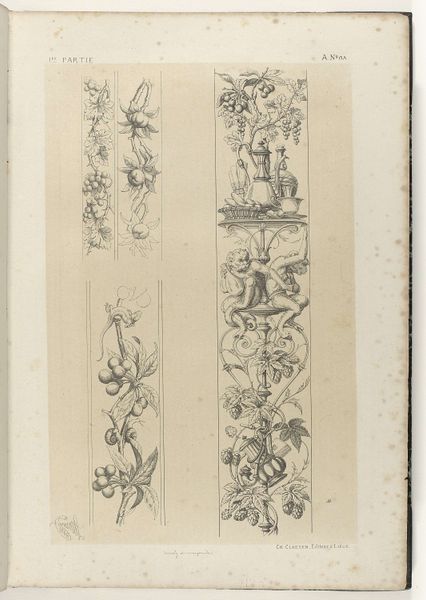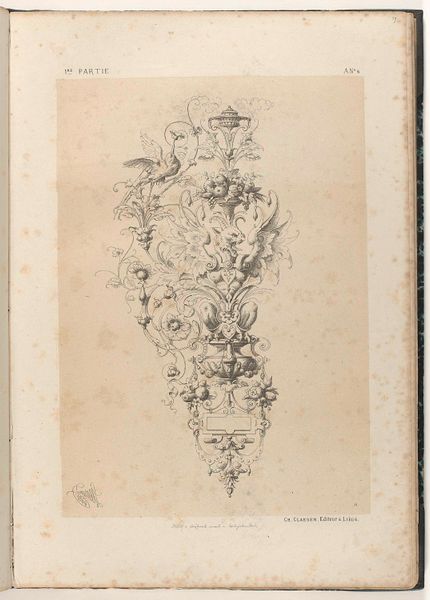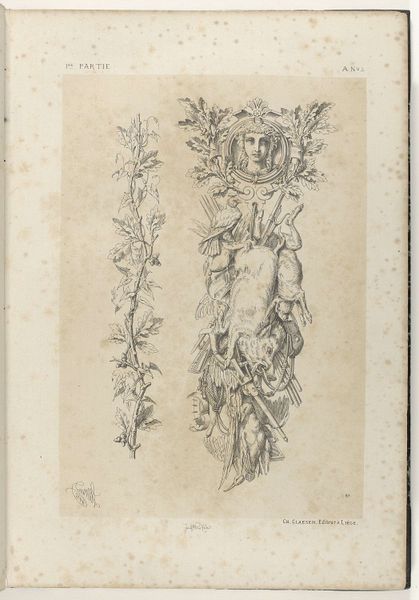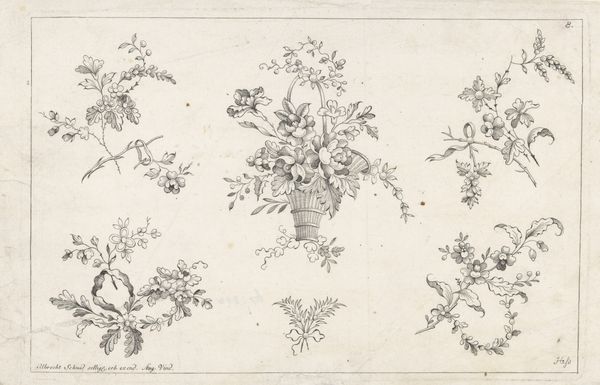
drawing, ink, pencil
#
drawing
#
pencil sketch
#
ink
#
pen-ink sketch
#
pencil
#
sketchbook drawing
#
academic-art
Dimensions: height 418 mm, width 290 mm
Copyright: Rijks Museum: Open Domain
Curator: Looking at this delightful page from a sketchbook by Michel Liénard, executed around 1866, titled “Two Trophies of Vegetables, Poultry, and Kitchen Utensils”, I immediately imagine the soundtrack to a bustling, but slightly surreal kitchen. Editor: A sketchbook page, interesting...my initial impression is stark: dead animals displayed like decorations are always problematic. Are we celebrating abundance or glorifying conquest? Curator: Both, perhaps. Consider the skill required to render such commonplace objects – those hanging game birds, the gourds, even humble pots and pans—with such fidelity. Liénard elevates the everyday to the level of fine art, creating a celebration of domestic bounty. The very concept of still life is elevated, suspended. Editor: Right, and I can certainly acknowledge the virtuosity, rendered with what appears to be pen, ink and pencil, the details are indeed striking. But this begs the question: whose domesticity is being celebrated? Who benefits from such "bounty," and at what cost, both literally and figuratively? This feels exclusionary; all that visual overabundance is deeply unsettling and rooted in hierarchies. Curator: Perhaps. Or perhaps, this arrangement transcends hierarchy, in some strange way. Notice how the trophies are nearly identical, as if mirroring each other's intrinsic beauty and worth regardless of their source. Each element, regardless of humble origin, takes on a certain weight. The drawings are balanced and poised despite the morbid elements you call out. There is almost a feeling of dance between the lines, an unusual choreography to each drawing. Editor: That choreography feels rooted in a rigid power structure – consider the positioning of the game, clearly killed, displayed almost as if awards of some kind. They are part of the page, indeed. I struggle with how art of the past subtly, or sometimes not so subtly, endorses questionable practices that endure in our present moment. Curator: I can definitely understand the points you are making. This could almost be read now as some kind of strange proto-feminist work. Hear me out, what I mean is, even those things associated traditionally with women in domestic service are presented as worthy of art! Editor: An intriguing point, though I feel its significance depends on how we understand that placement. Does this truly elevate their role, or merely exoticize it, rendering it "safe" for bourgeois consumption? It's complex, and frankly, quite open to interpretation. Curator: Very open, I agree! The work certainly generates dialogue that lingers even long after we’ve walked away. Editor: Absolutely. It’s a valuable reminder of the power art has to reveal uncomfortable truths about society, then and now.
Comments
No comments
Be the first to comment and join the conversation on the ultimate creative platform.
